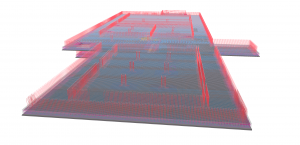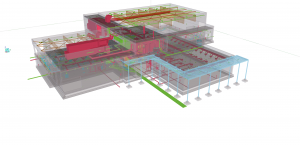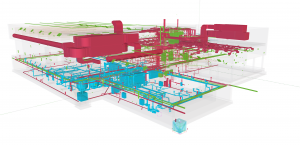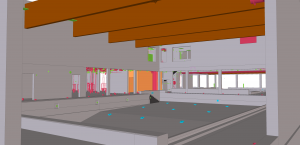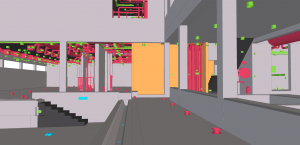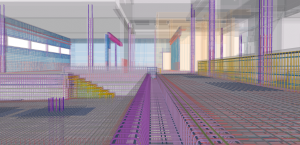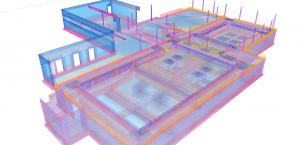 Ganador del voto del publico - 2020
Ganador del voto del publico - 2020
 Ganador de categoría en los países:
Ganador de categoría en los países:
Realiseren van nieuw zwembad voor de gemeenten Aartselaar, Hemiksem en Niel.

| Categoría | Deporte y recreación |
|---|---|
| Año | 2020 |
| País | Benelux |
| Organización | Tractebel-Engie |
| Autor | Leen Meul |
| Coautores | LD Architecten, Strabag Belgium, Engie Fabricom |
| Cliente | IGEAN |
| Lugar de construcción | Aartselaar (B) |
| Tags |
Het bestaande zwembad op het sportterrein van de gemeente Aartselaar is dermate verouderd waardoor de nood ontstaat om een nieuw zwembad te realiseren. In opdracht van de intercommunale IGEAN zal dit nieuwe zwembad gebouwd worden op dezelfde sportsite, waarna het bestaande zwembad wordt afgebroken. De nieuwe sportinfrastructuur zal zwemplezier geven aan de inwoners van de gemeenten Aartselaar, Hemiksem en Niel.
Tractebel stond met dit ontwerp voor een multi-disciplinaire opdracht. Een project dat vraagt om een geïntegreerde BIM aanpak. Tekla Structures werd van bij de start ingezet als modelleer software voor de structuur (zowel beton, staal als hout), maar ook als coördinatiemodel waarbij de verschillende 3D discipline modellen werden samengebracht. Zo werden onder andere 3D IFC modellen van architectuur en diverse technieken (HVAC, elektriciteit, sanitair, riolering en waterbehandeling) in het model ingeladen.
Door deze aanpak konden alle raakvlakken tussen de diverse ontwerp disciplines goed in beeld gebracht worden. Het werd snel duidelijk dat de verschillende technische disciplines een prominente rol zouden gaan spelen. De omvang en complexiteit van het leidingennetwerk in een zwembad zijn aanzienlijk. Daardoor ontstond de noodzaak om al in de ontwerpfase de nodige sparingen te voorzien in de structuur. De technieken ontwerpers leverden IFC modellen aan met dummy elementen die de sparingen definieerden in afmeting en positie. Deze dummy elementen werden geconverteerd naar native Tekla objecten, waardoor het voorzien van de juiste sparing op de juiste plaats vlekkeloos kon verlopen.
Clash detectie gebeurde in ontwerpfase waardoor problemen tijdens de uitvoering vermeden werden. Het 3D model werd bovendien door het ontwerpteam intensief gebruikt als communicatie tool en visualisatietool, waardoor ook de stakeholders het ontwerp van nabij konden volgen.
Wat betreft de structurele discipline, werd de volledige bekisting en wapening in 3D uitgewerkt. Deliverables als bekistingsplannen, meetstaten, wapeningsplannen, buigstaten konden vervolgens gemakkelijk gegenereerd worden uit het model, zodat het ontwerp klaar was voor uitvoering. Ook voor de aannemer levert een 3D model van bekisting en wapening uiteindelijk een tijdwinst op.
Tot slot kunnen we concluderen dat het coördineren van de modellen van de verschillende disciplines wat meer inspanning en werk vraagt in de ontwerpfase, maar dat dit ruimschoots gecompenseerd wordt in de uitvoeringsfase.
The existing swimming pool on the sports field of the municipality of Aartselaar is so outdated that the need arises to realize a new swimming pool. Commissioned by the intermunicipal association IGEAN, this new swimming pool will be built on the same sports site, after which the existing pool will be demolished. The new sports infrastructure will give swimming pleasure to the inhabitants of the municipalities of Aartselaar, Hemiksem and Niel.
With this design, Tractebel faced a multi-disciplinary assignment. A project that requires an integrated BIM approach. From the start, Tekla Structures was used as modeling software for the structure (both concrete, steel and wood), but also as a coordination model in which the various 3D discipline models were brought together. Amongst others, 3D IFC models of architecture and various techniques (HVAC, electricity, plumbing, sewerage and water treatment) were loaded into the model.
This approach allowed all interfaces between the various design disciplines to be mapped out clearly. It soon became clear that the various technical disciplines would play a prominent role. The size and complexity of the piping network in a swimming pool are considerable. This created the need to provide the necessary openings in the structure as early as the design phase. The technique designers supplied IFC models with dummy elements that defined the openings in size and position. These dummy elements were converted into native Tekla objects, allowing for a flawless installation of the right openings in the right place.
Clash detection was done in the design phase, avoiding problems during execution. The 3D model was also used intensively by the design team as a communication and visualization tool, allowing stakeholders to follow the design closely.
Regarding the structural discipline, the complete formwork and reinforcement were elaborated in 3D. Deliverables such as formwork plans, bills of quantity, reinforcement plans, bending schedules could then easily be generated from the model, so that the design was ready for execution. A 3D model of formwork and reinforcement ultimately saved time for the contractor as well.
Finally, we can conclude that coordinating the models of the various disciplines requires a little more effort and work in the design phase, but that this is amply compensated in the execution phase.




